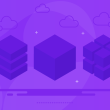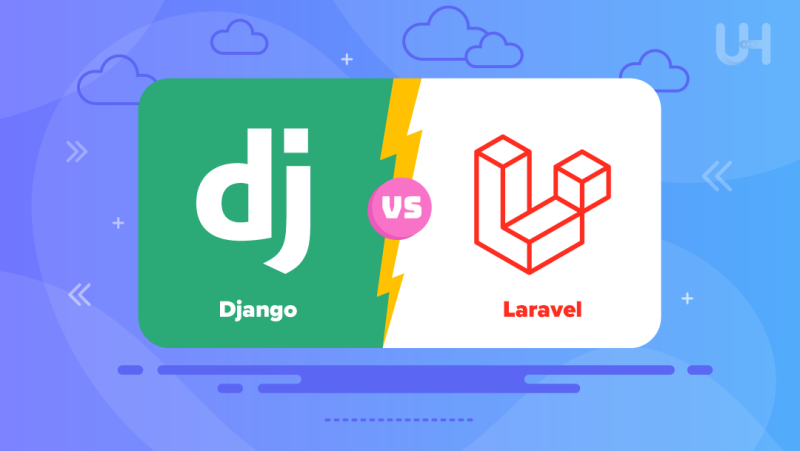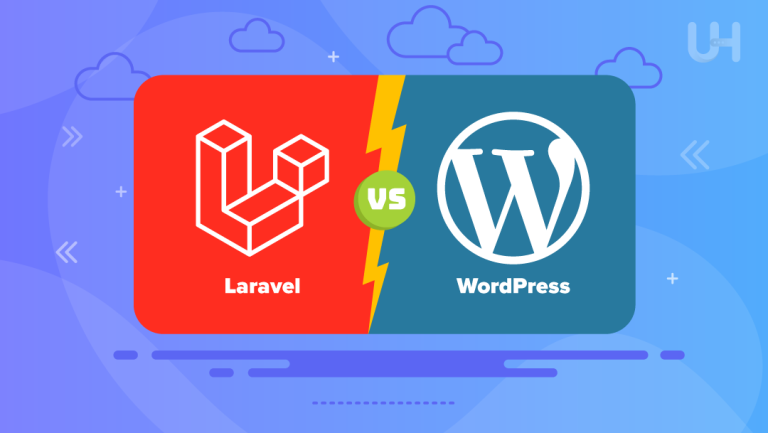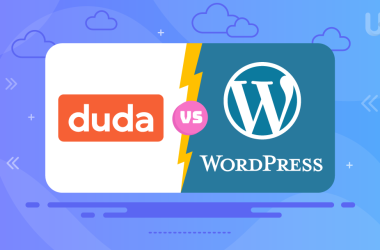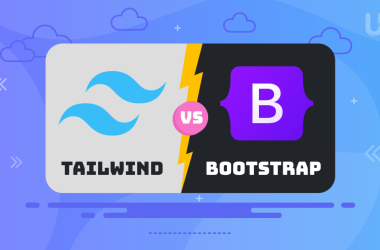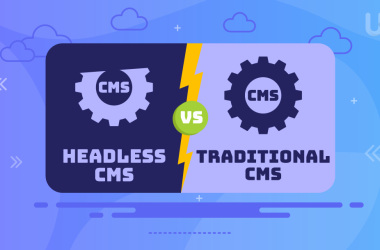In web development, Django and Laravel stand out as leading frameworks. Django offers a comprehensive toolkit for Python developers, emphasizing rapid development and clean design. On the other hand, Laravel has quickly become a favorite among PHP developers for its elegant syntax and powerful features. Choosing between Django vs Laravel is crucial, influencing factors like productivity, scalability, and long-term sustainability.
Whether you’re a developer or business owner, this blog will help you make informed decisions for your projects.
Overview of Laravel
Laravel, introduced in 2011, emerged as a breath of fresh air in the PHP community. Created by Taylor Otwell, Laravel aimed to provide an elegant and expressive syntax for PHP on a dedicated server, making web development enjoyable and efficient. Since its inception, Laravel has undergone significant evolution, with regular updates and refinements based on community feedback and emerging trends in web development.
Core Features and Strengths
Laravel offers a rich set of features and capabilities that contribute to its popularity among developers:
- Expressive syntax: Laravel’s syntax is clean, expressive, and easy to understand, making it a pleasure to work with for PHP developers of all levels. Features like routing, database migrations, and templating are designed to be intuitive and developer-friendly.
- Modularity and extensibility: Laravel follows the principle of “batteries included, but removable.” It comes with a wide range of built-in functionalities, such as authentication, caching, and queueing, while also allowing developers to easily extend or replace these components with their own implementations.
- Eloquent ORM: Laravel’s ORM (Object-Relational Mapping) system, Eloquent, provides an elegant and intuitive way to interact with databases. With features like model relationships, query builder, and migration support, Eloquent simplifies database operations and promotes code readability.
- Blade templating engine: Laravel’s Blade templating engine offers a powerful yet simple way to create reusable and dynamic templates. Blade templates support features like template inheritance, control structures, and components, enabling developers to build modular and maintainable views.
- Artisan command-line interface: Laravel ships with a command-line interface called Artisan, which provides a set of handy tools for automating repetitive tasks, managing database migrations, generating code scaffolding, and more. Artisan enhances developer productivity and encourages best practices in Laravel development.
Overview of Django
Django, established in 2005, grew out of a need for a better web development framework at a newspaper company. It was designed to make building web applications fast and easy. Over the years, it has evolved into a mature and powerful framework, driven by a vibrant community of developers worldwide.
Core Features and Strengths
Django boasts a plethora of features that make it a top choice for developers:
- Batteries-included philosophy: Django comes with many built-in tools and features, such as an ORM (Object-Relational Mapping) system, an admin panel, authentication, and URL routing. This means developers can start building applications right away without having to install or configure a bunch of separate tools.
- Rapid development: Django’s clean and pragmatic design, along with its extensive documentation and built-in components, allows developers to create web applications quickly. This accelerates the development process and reduces time-to-market for projects.
- Scalability: Django is well-suited for building scalable web applications. Its architecture enables developers to efficiently handle increased traffic and data volume as the application grows. Django’s ability to integrate with caching solutions, load balancing solutions, and asynchronous task queues further enhances scalability.
- Security: Django prioritizes security by providing built-in protection against common web vulnerabilities, such as SQL injection, cross-site scripting (XSS), and cross-site request forgery (CSRF). Features like built-in user authentication, session management, and secure password hashing contribute to Django’s robust security.
Ready to Dive Deeper into Django?
Take your Django projects to new heights with Ultahost’s specialized Django hosting solutions. Explore our offerings and launch your website with confidence.
Laravel vs Django Performance Comparison
Here are some key differences between Django vs Laravel, when it comes to performance:
Speed and Efficiency Benchmarks
In terms of speed and efficiency, both Django and Laravel offer competitive performance, but their implementations and underlying technologies can impact specific benchmarks. Django, powered by Python, is known for its efficient execution and scalability, particularly in handling I/O-bound tasks. On the other hand, Laravel, built on PHP, has made significant performance improvements with each release, leveraging features like opcode caching and JIT compilation. These optimizations have enabled Laravel development companies to achieve remarkable performance metrics in production environments while building and deploying apps for their clients.
Benchmarking tests conducted on various aspects of web application performance, such as response time, throughput, and memory consumption, can provide insights into the comparative performance of Django and Laravel in different scenarios.
Scalability and Resource Management
Scalability and resource management are critical considerations for web applications, especially as they grow in size and complexity. Both Django and Laravel offer features and best practices for ensuring scalability and efficient resource utilization.
Django’s asynchronous capabilities, introduced in recent versions, enable developers to build highly scalable applications that can handle concurrent requests efficiently. Additionally, Django’s support for caching mechanisms, database connection pooling, and load balancing contributes to its scalability.
Laravel provides similar scalability features, with built-in support for caching, database sharding, and queue management. Laravel’s integration with technologies like Redis and Elasticsearch further enhances its scalability capabilities, allowing developers to build robust and scalable applications that can handle increased workload and traffic spikes.
Handling Large-Scale Applications
Both Django and Laravel have proven their ability to handle large-scale applications effectively. Django’s architecture, with its emphasis on modularity and clean design, allows developers to organize and manage large codebases efficiently. Django’s built-in support for database migrations, schema migrations, and version control systems facilitates collaborative development and deployment workflows for large teams.
Similarly, Laravel’s expressive syntax, coupled with its modular architecture, enables developers to build and maintain large-scale applications with ease. Laravel’s support for package management, dependency injection, and service providers enhances code organization and promotes code reuse, making it well-suited for complex projects.
Ultimately, the choice between Django and Laravel for handling large-scale applications depends on factors such as team expertise, project requirements, and performance considerations. Both frameworks offer robust solutions for building scalable and efficient web applications.
Django vs Laravel Development Flexibility
Here are some key differences between Django vs Laravel, when it comes to flexibility:
Language Support and Compatibility
Django and Laravel differ in terms of language support and compatibility. Django is primarily a Python framework, which means developers must be comfortable working with Python to leverage its full potential. However, Django’s support for multiple databases and its integration with other technologies through Python libraries offer flexibility in choosing the right tools for specific project requirements.
Laravel, on the other hand, is built on top of PHP. PHP is a programming language for web development. PHP’s ubiquity and compatibility with various hosting environments make Laravel an accessible choice for developers familiar with PHP. Laravel also supports other languages through frontend such as JavaScript frameworks like Vue.js and React, providing flexibility in frontend development.
Built-in Features for Rapid Development
Both Django and Laravel come with built-in features and tools designed to accelerate the development process. Django’s “batteries-included” philosophy means it ships with a wide range of built-in functionalities, including an ORM (Object-Relational Mapping) system, an admin panel, authentication, and URL routing. These built-in features allow developers to start building web applications quickly without having to reinvent the wheel.
Similarly, Laravel provides a rich set of built-in functionalities to streamline development workflows. Features like Eloquent ORM, Blade templating engine, authentication scaffolding, and Artisan command-line interface empower developers to rapidly prototype and build web applications with minimal boilerplate code. Laravel’s focus on developer productivity and code simplicity makes it an excellent choice for projects with tight deadlines or iterative development cycles.
Customization and Extendibility
Both Django and Laravel offer extensive customization and extendibility options to adapt to unique project requirements. Django’s modular architecture and support for reusable components enable developers to customize and extend its functionalities easily. Developers can create custom middleware, template tags, and third-party packages to tailor Django on Ubuntu VPS.
Likewise, Laravel’s modular architecture and support for service providers, facades, and middleware facilitate customization and extendibility. Laravel’s robust ecosystem of third-party packages, available through Composer, allows developers to integrate additional functionalities seamlessly into their projects. Whether it’s adding new features, integrating with external APIs, or extending core functionalities, Laravel provides the flexibility and tools necessary for web application development.
Django vs Laravel Security Considerations

Here are some key differences between Django vs Laravel, when it comes to security:
Built-in Security Features
Both Django and Laravel prioritize security and come with built-in features to help developers build secure web applications.
Django offers robust security features out of the box, including:
- Built-in protection against common vulnerabilities: Django provides defenses against common web vulnerabilities such as SQL injection, cross-site scripting (XSS), cross-site request forgery (CSRF), and clickjacking. These protections are built into the framework’s core functionalities, reducing the risk of security breaches.
- Authentication and authorization: Django includes a powerful authentication system that supports user authentication, permissions, and session management. Developers can easily implement role-based access control (RBAC) and fine-grained permissions to restrict access to sensitive areas of the application.
- Secure password handling: Django provides utilities for securely managing user passwords, including password hashing, salting, and password validation. This helps prevent password-related security vulnerabilities, such as prevent brute force attacks and password leakage.
Similarly, Laravel emphasizes security and offers built-in features to enhance application security, such as:
- Authentication and authorization: Laravel provides a robust authentication system with features like password hashing, encryption, and token-based authentication. Developers can easily implement authentication and authorization mechanisms to control access to resources.
- Input validation and sanitation: Laravel includes validation and sanitation mechanisms to validate user input and prevent common security vulnerabilities, such as SQL injection and XSS attacks.
Vulnerability Management and Patching
Both Django and Laravel have dedicated security teams that actively monitor and address security vulnerabilities in the frameworks. Regular security updates and patches are released to address identified vulnerabilities and strengthen the frameworks’ security posture.
Developers using Django and Laravel should stay informed about security advisories and apply patches promptly to mitigate potential security risks. Additionally, developers can leverage security tools and services, such as vulnerability scanners and penetration testing, to identify and remediate security vulnerabilities in their applications.
Best Practices for Securing Applications
In addition to built-in security features, developers should follow best practices for securing web applications when using Django and Laravel:
- Input validation and sanitation: Validate and sanitize all user input to prevent injection attacks and XSS vulnerabilities.
- Use HTTPS: Encrypt data transmission between the client and server using HTTPS to protect against eavesdropping and data interception.
- Implement access controls: Enforce least privilege access controls to restrict user access to sensitive resources based on roles and permissions.
- Regularly update dependencies: Keep framework dependencies, libraries, and packages up to date to patch known vulnerabilities and ensure the security of the application.
By following these best practices and leveraging the built-in security features of Django and Laravel, developers can build secure web applications that protect against common security threats and vulnerabilities.
Conclusion
Choosing between Django vs Laravel depends on various factors like project requirements, developer expertise, and ecosystem compatibility. Django offers rapid development, scalability, and security with its Pythonic elegance, while Laravel’s expressive syntax and rich ecosystem appeal to PHP developers. Both frameworks empower developers to build secure, efficient web applications tailored to modern demands. By understanding their strengths and aligning them with project goals, developers can navigate the complexities of web development and deliver exceptional digital experiences.
Whether opting for Django or Laravel, success lies in choosing the right tool for the job and leveraging its strengths effectively. Take the next step in your web development journey with Ultahost’s PHP hosting services. Explore our offerings and unlock the full potential of your website today!
FAQ
Which framework is better for beginners, Django or Laravel?
Both Django and Laravel have friendly communities and extensive documentation, making them suitable for beginners. However, developers already familiar with Python might find Django more intuitive, while those comfortable with PHP may prefer Laravel.
Are Django and Laravel suitable for building large-scale applications?
Yes, both Django and Laravel are capable of handling large-scale applications effectively. They provide features for scalability, robustness, and security, making them suitable choices for projects of all sizes.
How do I choose between Django vs Laravel for my project?
Consider factors such as your team’s expertise, project requirements, ecosystem compatibility, and performance considerations. Django may be preferable for Python-centric projects or those requiring complex backend logic. However, Laravel may suit PHP developers or projects emphasizing elegant syntax and rapid development.
What security measures are built into Django vs Laravel?
Django and Laravel prioritize security and come with built-in features like protection against common vulnerabilities (e.g., SQL injection, XSS), authentication systems, input validation, and CSRF protection.



